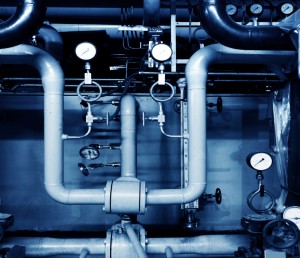How Does a Heat Pump Work?
What is a heat pump? How does it work? And what can it do to make your Ontario home energy-efficient and comfortable year round? Learning a little about how a heat pump works and then contacting your local ClimateCare member for more information could save you thousands.
Heat pumps
 Most Canadian homeowners are familiar with furnaces, boilers, whole house fans and central air conditioners. But a lot of our customers are unfamiliar with heat pumps, and how heat pumps work.
Most Canadian homeowners are familiar with furnaces, boilers, whole house fans and central air conditioners. But a lot of our customers are unfamiliar with heat pumps, and how heat pumps work.
We expect furnaces and boilers to keep us warm, and central air conditioners to keep us cool. A heat pump can do both. A heat pump moves heat from warmer to cooler areas, whether that means drawing heat from outside into your home, or moving hot, stuffy air from inside your home out into the summer air.
How does a heat pump work in the winter?
How can it move heated air efficiently? How could it extract usable heat from winter air?
A heat pump is a split system, with part of the equipment outside to draw in or expel heat, and part inside to radiate or collect heat. During a typical Ontario fall and winter, the outside air still has heat—thermal energy—in it, which can be collected and moved inside.
At around 4 degrees, the heat pump will be neither energy efficient nor very productive at drawing heat from the frigid outdoor air, and most homeowners supplement the system with an existing furnace or boiler. For much of the fall, and on warmer winter days, a heat pump can bring in outside heat and lower your fuel bill.
Summer
In summer, the system works in reverse, collecting and sending out into the summer air all the built-up heat inside your home, providing a comfortable, low-humidity environment.
Details
Heat pumps come in two varieties:
- Air Source Heat Pumps—harnessing the thermal energy in the air
- Geothermal Heat Pumps—using the earth or a water reservoir in the earth as a heat sink
Either way, it doesn’t change how a heat pump works. It moves the air from one location to another.
A heat pump should be professionally installed, but is no more complicated than installing a central air conditioner. The whole job takes around one long day.
SEER
The efficiency of your heat pump is measured by seasonal energy efficiency ration (SEER). SEER ranges from around 13 to 24.5, but the costs of models able to attain 24.5 SEER seldom justify their expense for residential use. Natural Resources Canada says two-thirds of our energy usage goes to home heating, so even a small improvement in efficiency can have big financial rewards.
Look for the EnerGuide label, and find heat pumps with a SEER toward the higher end but that do not break your budget.
Expert Advice
A member of our team can show you how your heat pump works and answer any other questions you have before, during or after your purchase.
We’ll assist you with evaluating your Ontario home’s heating and cooling loads, selecting the ideal heat pump, arranging financing and scheduling flawless installation. Find your local ClimateCare member today!




